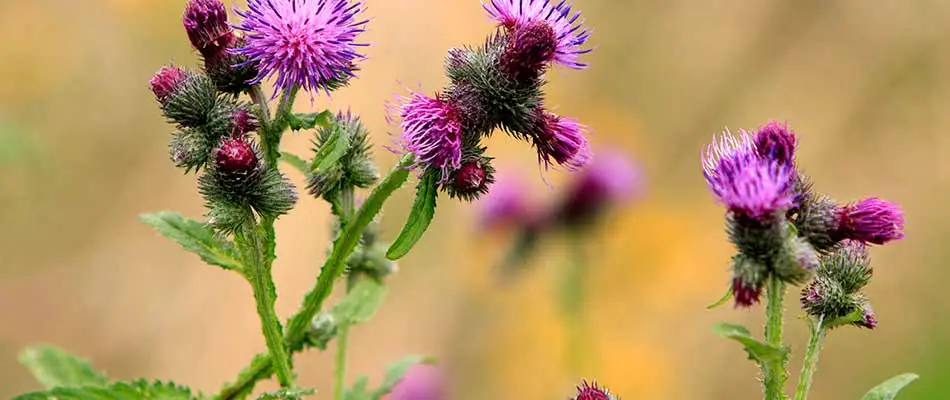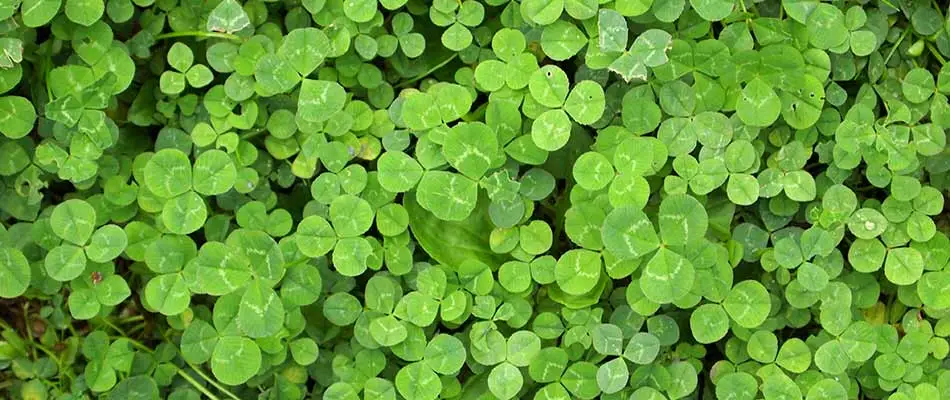
Read helpful tips and articles here on lawn care services in Ada, MI and surrounding communities.

Summer is a time to enjoy your lawn and hang outside with friends and family, but when summer weeds try to invade, they can destroy the look and feel of your grass, making it look much less inviting and potentially hazardous.
Learn about three common summer weeds that can invade your lawn in Lowell, Ada, Cascade, and the nearby areas of Michigan and how you can identify and kill them before they take over the entire yard.

We have both red clover and white clover here, so it is easy to see the flowers of these weeds when they begin to sprout. The plant itself has three leaves clustered together that make it easy to identify. Many easily confuse clover with other plants like oxalis and black medic that also have three leaves together, but clover leaves are teardrop-shaped while oxalis has heart-shaped leaves.
Clover will begin growing in your lawn during the summer and thrives when lawns are dry and soil is compacted.

In our area of Michigan, there are several types of thistle that grow. Some of these thistle plants are considered invasive, meaning they are not native to the area and need to be removed. Invasive thistle species include:
The thistle is characterized with its tuft-like bright purple flowers that grow tall...

Working to create a beautiful lawn is a lot of work, and when that work is destroyed by unwanted plants taking over your grass, that can be incredibly frustrating. One of those unwanted plants that is also hard to get rid of is called yellow nutsedge.
Learn more about this nuisance plant and how to get it out of your lawn in areas such as Lowell, Ada, Cascade, and surrounding cities in Michigan.
The first sign of yellow nutsedge is your lawn slowly turning yellow. This plant is a type of sedge, or a grass-like plant. It generally begins growing in the months of June, July, and August. While at first, it may not be as visible as other undesirable plants, you will quickly notice it happen because nutsedge will grow much more quickly than your grass and will stick up from the rest of the grass. Your previously uniform lawn will no longer look green and vibrant. It is a very invasive plant and will take over the lawn rapidly. As it grows, there will be spiky yellow flower-like structures sticking out of the top of it.

Getting rid of yellow nutsedge is not a simple process. Since sedge is not a typical weed, it does not respond to broadleaf weed control treatments. Removing nutsedge is a multi-year process because it can never be truly removed, it has to be suppressed. In other words, yellow nutsedge may always be present in your yard but suppression treatments...

Crabgrass is a hardy weed that tends to thrive in sandy and tightly-packed soil, which is the most dominant type of soil in the Grand Rapids area.
Our lawn fertilization experts here at Turf Tech Fertilization deliver a preventative crabgrass treatment early on in our lawn care program. We serve both homes and businesses located in Cascade, Ada, and Lowell, MI.
Crabgrass grows rapidly once the spring rolls around, so you must have preventative measures in place if you want to keep this pesky weed at bay. Check out some of the specific reasons why you need to keep crabgrass out of your yard.

According to a study conducted by the American Chemical Society's Journal of Agricultural and Food Chemistry, crabgrass strips lawns of the nutrients, water, and sunlight that they need to grow. Additionally, the same study found that crabgrass emits its own herbicides that kill adjacent plants.
Because of the herbicides that it emits, crabgrass can also damage the quality of your soil. While your soil's quality can be restored, it requires extensive soil testing and costly soil repair services.
Crabgrass is defined as a warm-season annual, but it behaves much like a perennial. It lives and dies off within the same year like an annual, but its growth pattern isn't that simple....

Complete our form below for a free quote on your next project!
